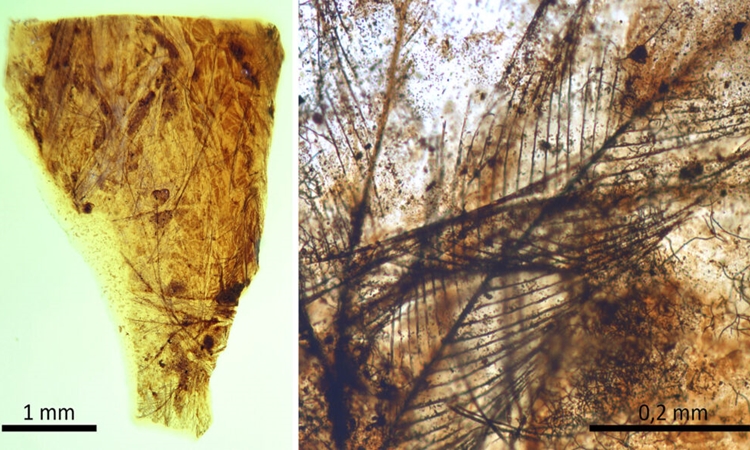MAMMAL hair discovered preserved in amber 110 million years ago may be the oldest ever found, scientists say.
The animal hair was unearthed by a team in Teruel, Aragon, who also found a dinosaur feather trapped in the resin.
Their findings, published in the journal Scientific Reports ‘shed light on the complexity of ecosystems during the Cretaceous’ said author Professor Xavier Delclòs from the University of Barcelona.
Until now the oldest known mammal hair has been found residing inside 160-million-year-old fossils, the previous oldest piece actually preserved dates from 100 million years ago.

The two new discoveries from the Santa María mine near Teruel’s capital Ariño are ‘exceptionally preserved’ say researchers.
The mammal hair and dinosaur feather, both date back to the Early Cretaceous period, are thought to have become fossilised 100million years after falling asleep or resting in trees.
The feather and hair would have torn when the animals woke up and tried to move as the amber had dried in a process known as ‘pull off vestiture’.
Both pieces of amber are now in the Palaeontological Museum of Aragon, Fundación Conjunto Paleontológico de Teruel – Dinópolis.
While Spain is a known hot spot for Cretaceous fossils, the researchers were not expecting to find animal remains preserved in amber.
Co-author doctoral student Sergio Álvarez-Parra from the University of Barcelona said: ‘The determination of both findings is very complex, but it is likely for the feather remains to correspond to the extinct birds Enantiornithes, like other feathers in amber.
“Regarding the lock of hair, we should consider that the surface scale pattern is similar to the current mammalian hair.
“Ariño was already known for its vertebrate fossils, such as the dinosaurs Proa valdearinnoensis and Europelta carbonensis, but no-one thought we could find remains from vertebrates included in amber.”
Click here to read more Spain News from The Olive Press.



